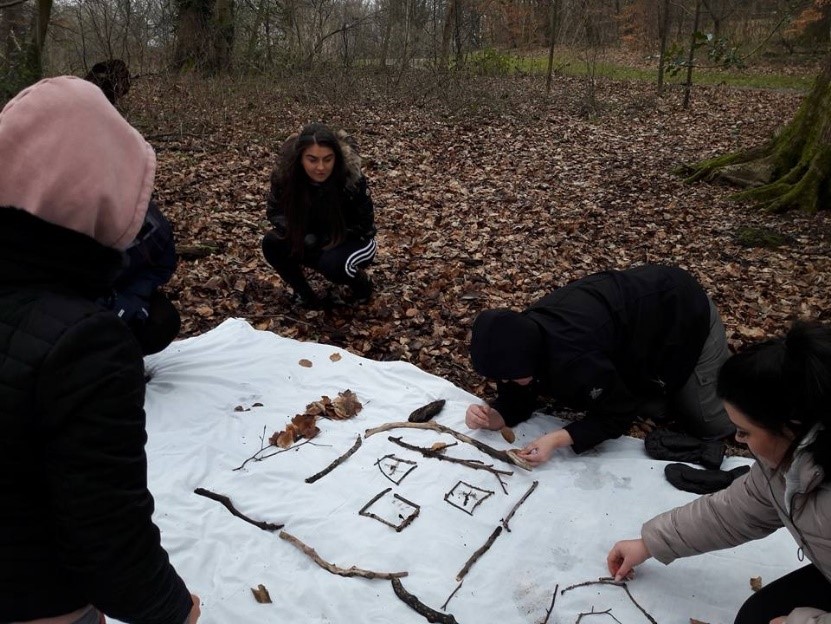13 Risky Play
Risky Play
Brussoni, M., Gibbons, R., Gray, C., Ishikawa, T., Hansen Sandseter, E. B., Bienenstock, A., …, Tremblay, M. S. (2015). What is the relationship between risky outdoor play and health in children? A systematic review. International Journal of Environmental Research and Public Health. 12, 6423 – 6454. doi:10.3390/ijerph120606423
A systematic review to examine the relationship between risky outdoor play and health in children, in order to inform the debate regarding its benefits and harms. Twenty-one relevant papers were evaluated for quality using the GRADE framework. Included articles addressed the effect on health indicators and behaviours from three types of risky play, as well as risky play supportive environments. The systematic review revealed overall positive effects of risky outdoor play on a variety of health indicators and behaviours, most commonly physical activity, but also social health and behaviours, injuries, and aggression.
Brussoni, M., Olsen, L. L., Pike, I., & Sleet, D. A. (2012). Risky play and children’s safety: Balancing priorities for optimal child development. International Journal of Environmental Research and Public Health, 9(9), 3134-3148. doi:10.3390/ijerph9093134
This journal article discusses the importance of risky play as a necessary part of children’s development and supports the need for outdoor risky play to foster healthy development. The article recommends building upon children’s natural tendency towards risky play and advocates that taking risks help children learn to manage risks.
Bundy, A. C., Wyver, S., Beetham, K. S., Ragen, J., Naughton, G., Tranter, P., … Sterman, J. (2015). The Sydney playground project- levelling the playing field: A cluster trial of a primary school-based intervention aiming to promote manageable risk-taking in children with disability. BioMed Central (BMC) Public Health, 15(1125), 1-6. doi:10.1186/s12889-015-2452-4
This journal article discusses how children and adults can provide opportunities to engage in manageable risky play. Discussion identifies ways to change how parents and educators view risk taking and encourage children with disability to take responsibilities for their on actions in outdoor play.
Canadian Public Health Association. (January 24, 2019). Playground injuries: Playground injury statistics. Retrieved on March 12, 2019 from https://www.cpha.ca/playground-injuries
A short article that demystifies media reports about injury trends and playground injuries. The article includes discussion about heights and surfaces, head injuries, and sports related injuries. The article concludes that “despite consistent efforts to make playgrounds safer, injury surveillance data have shown no significant trends in injuries over time.”
Gull, C., Goldstein, S. L., & Rosengarten, T. (2018). Benefits and risks of tree climbing on child development and resiliency. International Journal of Early Childhood Environmental Education, 5(2), 10-29. Retrieved from https://eric.ed.gov/?id=EJ1180021
Using a mixed-method survey instrument, researchers surveyed 1602 parents in the United States to investigate tree-climbing behaviours of their children, reasons parents allow tree-climbing and the related injuries that can occur. The study concluded that while tree-climbing can result in minor injuries, it is a relatively safe activity that promotes social, emotional and cognitive growth along with increased resiliency in children. The article provides a review of tree-climbing policy, the trends toward limiting children’s access to tree-climbing due to fear of injury or liability, and a literature review of the impacts of engaging in risk-taking play. A list of ten potential benefits of natural play from the literature is also included.

Hansen Sandseter, E. B., & Sando, O. J. (2016). “We don’t allow children to climb trees” How a focus on safety affects Norwegian children’s play in early-childhood education and care settings. American Journal of Play, 8(2), 178-200. Retrieved from hhttp://www.journalofplay.org/sites/www.journalofplay.org/files/pdf-articles/8-2-article-we-dont-allow-children-to-climb-trees.pdf
Researchers investigated how a societal increased focus on safety impacted play and activities in Norwegian Early Childhood Education programs. The most commonly restricted play activity was climbing, with some institutions banning climbing. Pressure from parents was cited a significant influence on determining which activities were allowed in programs. Playground inspection and regulation also limited playground equipment purchases or uses as extensive rules exclude equipment like a hanging hammock between trees. A comprehensive literature review that outlines the benefits of children engaging in risky play, including developing risk-assessment skills and reducing phobias and anxiety, is included in the paper. The impact of potential injuries on the development of risk-management strategies to regulate playground design is presented based on current literature. The inverse correlation of level of supervision with the number of injuries in risky play is also highlighted.
O’Brien, L. (2009). Learning outdoors: The forest school approach. Education 3-13, 37(1), 45-60. doi:10.1080/03004270802291798
People have a real connection with the woodlands around them. Learning outdoors is important for children and young people. The natural environment should be seen as an extension of the classroom. Children can improve their confidence, motivation, concentration, language and communication, and physical skills through experiences in nature.
Sandseter, E. B. (2012). Restrictive safety or unsafe freedom? Norwegian ECEC practitioners’ perceptions and practices concerning children’s risky play. Child Care in Practice, 18(1), 83-101. doi:10.1080/13575279.2011.621889
This journal article focuses on how early childhood educators and practitioners handle risk in children’s play experiences. The results concluded that Norwegian kindergarten programs do allow opportunities for risky play in their environment.
Spiegal, B., Gill, T. R., Hardbottle, H., & Ball, D. J. (2014). Children’s play space and safety management: Rethinking the role of play equipment standards. SAGE open. January – March 2014 (1–11). DOI: 10.1177/2158244014522075
A review of theoretical and empirical research studies, which investigate the benefits of children’s experimentation with risk and the consequences of reduced opportunity due to fear of injury and avoidance of litigation. International standards on play equipment are discussed.
Wishart, L., Cabezas-Benalcázar, C., Morrissey, A. & Versace, V.L. (2018). Traditional vs naturalised design: A comparison of affordances and physical activity in two preschool playscapes. Landscape Research. doi: 10.1080/01426397.2018.1551524
Looking at children’s movement and using behaviour mapping, this study compared traditional to naturalized playscapes to determine which provides more opportunities for varied physical activity. Findings show that naturalized playscapes provide equal or greater opportunities for pre-schooler activities than traditional standardized equipment.

